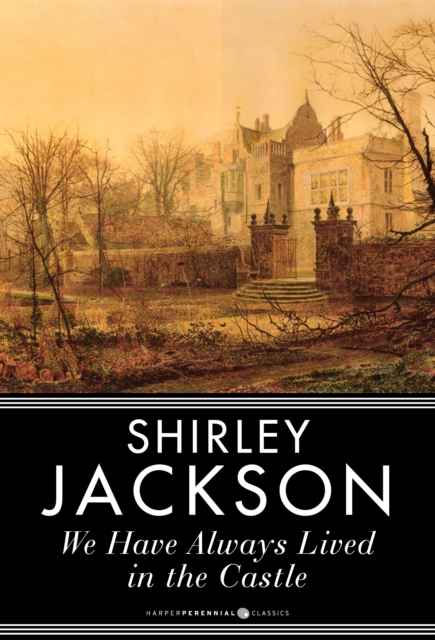LoveReading Says
LoveReading Says
The first paragraph of Shirley Jackson’s novel is one of the best character introductions in literature – and what a character Merricat Blackwood is.
My name is Mary Katherine Blackwood. I am eighteen years old and I live with my sister Constance. I have often thought that with any luck at all I could have been born a werewolf because the two middle fingers on my hands are the same length, but I have had to be content with what I had. I dislike washing myself and dogs and noise. I like my sister Constance, and Richard Plantaganet, and Amanita Phalloides, the death-cup mushroom. Everyone else in my family is dead.
Merricat lives with her sister Constance and Uncle Julian outside the village – the rest of her family were poisoned six years ago by arsenic in the sugar. Constance was tried and acquitted, the villagers don’t speak to them, now. They live a charmed, isolated life. Though the two sisters are very different, the love between Constance and Merricat is deeply touching. However, when their cousin Charles arrives, so do discipline and patriarchy.
The book is both grounded and powered by dark sympathetic magic - Merricat buries silver dollars, her baby teeth and blue marbles at various locations on the family property, as ‘safeguards,’ to protect herself and Constance. The eponymous Castle of the title doesn’t materialise until an act of transformation, during the novel’s gloriously odd ending.
Selected by Catriona Ward, Our Winter 2022 Guest Editor. Click here to read the full Guest Editor Piece.
LoveReading
Find This Book In
About
We Have Always Lived in the Castle Synopsis
Mary Katherine "e;Merricat"e; Blackwood and her elder sister Constance live alone in their ancestral home with their crippled uncle after the tragic murder of both of their parents, their aunt, and their younger brother. Having been accused and later acquitted of the murders, Constance confines herself to the grounds of their home, while Merricat contends with their hostile neighbors and with the ever-increasing sense of impending danger she feels is heading their way. In We Have Always Lived in the Castle, author Shirley Jackson deftly handles delicate subjects like mental illness, agoraphobia, and social isolation. We Have Always Lived in the Castle was Jackson's final novel, and has been held in high critical esteem since its publication in 1962.HarperPerennial Classics brings great works of literature to life in digital format, upholding the highest standards in ebook production and celebrating reading in all its forms. Look for more titles in the HarperPerennial Classics collection to build your digital library.
About This Edition
Press Reviews
Shirley Jackson Press Reviews
A marvellous elucidation of life ... a story full of craft and full of mystery - The New York Times Book Review
A witch's brew of eerie power and startling novelty - The New York Times
Manages the ironic miracle of convincing the reader that a house inhabited by a lunatic, a poisoner, and a pyromaniac is a world more rich in sympathy, love and subtlety than the world outside - Time
We Have Always Lived in the Castle is Jackson's masterpiece ... Stunning -- Elaine Showalter For me, it is that unique and dreamlike book ... that stands as her masterpiece -- Jonathan Lethem So eerie, so disturbing, and not a wasted word, it has the kind of economy I wish I knew how to achieve -- Jonathan Coe A masterpiece of Gothic suspense -- Joyce Carol Oates The world of Shirley Jackson is eerie and unforgettable ... She is a true master -- A. M. Homes An amazing writer -- Neil Gaiman This novel brings back all my faith in terror and death. I can say no higher of it and her -- Dorothy Parker - Esquire
Her greatest book ... at once whimsical and harrowing, a miniaturist's charmingly detailed fantasy sketched inside a mausoleum ... Through depths and depths and bloodwarm depths we fall, until the surface is only an eerie gleam high above, nearly forgotten; and the deeper we sink, the deeper we want to go -- Donna Tartt -
Author
About Shirley Jackson
Shirley Jackson was born in an affluent suburb in California in 1916. At university in Syracuse, she met her husband, the future literary critic Stanley Edgar Hyman, with whom she had four children. In 1948 she published her iconic short story 'The Lottery' in The New Yorker, sparking furious letters from readers to the magazine. Her novels - most of which involve elements of horror and the occult - include The Road through the Wall, Hangsaman, The Bird's Nest, The Sundial, We Have Always Lived in the Castle and The Haunting of Hill House. Shirley Jackson died in her sleep in 1965 at the age of 48.
Author photo © Hyman
More About Shirley Jackson
